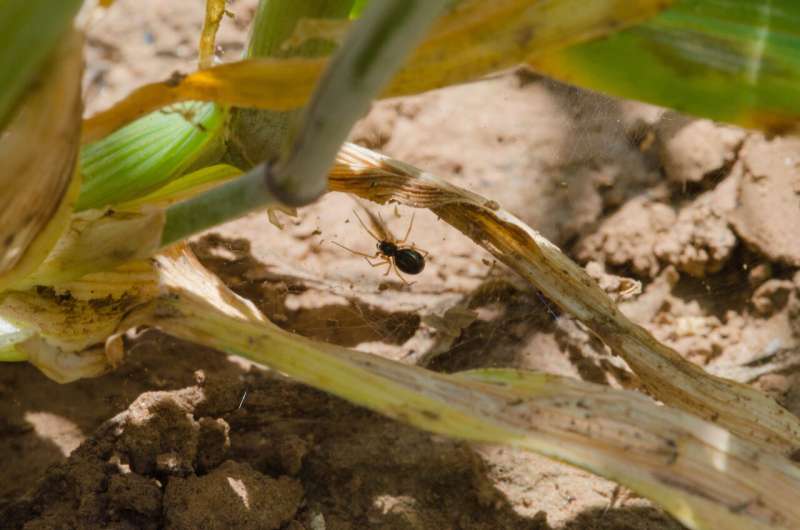This article has been reviewed according to Science X's editorial process and policies. Editors have highlighted the following attributes while ensuring the content's credibility:
fact-checked
peer-reviewed publication
trusted source
proofread
Spiders forage for prey rich in specific nutrients depending on species, life stage and sex

A new field study of arachnid hunting behavior has shown that spiders forage for prey rich in specific nutrients, and their preferences depend on the individual spider's species, life stage and sex. The results suggest that it may be possible to link spider predation to pest control in famers' fields if the various arachnid species can be encouraged to selectively hunt troublesome insects.
In the study, now published in Oikos, adult spiders consumed more carbohydrate-rich and lipid-rich prey, while juvenile spiders consumed slightly more protein-rich prey. Other dietary differences between species were also identified. These prey preferences show that spiders may have evolved to vary their diet depending on their own nutritional requirements at certain stages in their life cycles.
"Many animals are thought to select food resources based on their nutritional content," said study lead author Dr. Jordan Cuff. "This has been studied before in the lab, but we wanted to find out if we could see the same effects in the field.
"Until recently, this would have been a huge challenge, but now, using DNA sequencing and biochemical methods, we are able process large numbers of samples to identify both what spiders are eating and the nutritional value of the prey consumed."
The study took place in fields in South Wales during a six-month period over the summer of 2018. First money spiders (Araneae: Linyphiidae) and wolf spiders (Araneae: Lycosidae) were collected by hand and then a suction sampler (essentially a large vacuum cleaner) was used to collect the invertebrate prey available to the spiders.
Using a DNA sequencing-based method called DNA metabarcoding, the species of prey that spiders ate were identified from fragments of DNA left in their guts and, by matching nutritional profiles to these data, it was possible to determine the precise nutrients the spiders had been eating.
"These results suggest that spiders selectively forage for prey rich in protein, lipids and carbohydrates, but the balance between these shifts to fit the predator's specific needs. Diet regulation by spiders is thought to be adaptive and many previous studies have shown significant effects of dietary nutrient content on spider growth, reproduction and survival," said Cuff.
Ultimately, an improved understanding of these kind of nutritional dynamics could be applied to improve biological pest control. Prey preferences could be exploited by changing field conditions and habitat structure to encourage predation of pests by providing nutritionally complementary prey.
More information: Jordan P. Cuff et al, Prey nutrient content is associated with the trophic interactions of spiders and their prey selection under field conditions, Oikos (2024). DOI: 10.1111/oik.10712
Journal information: Oikos
Provided by Rothamsted Research
















